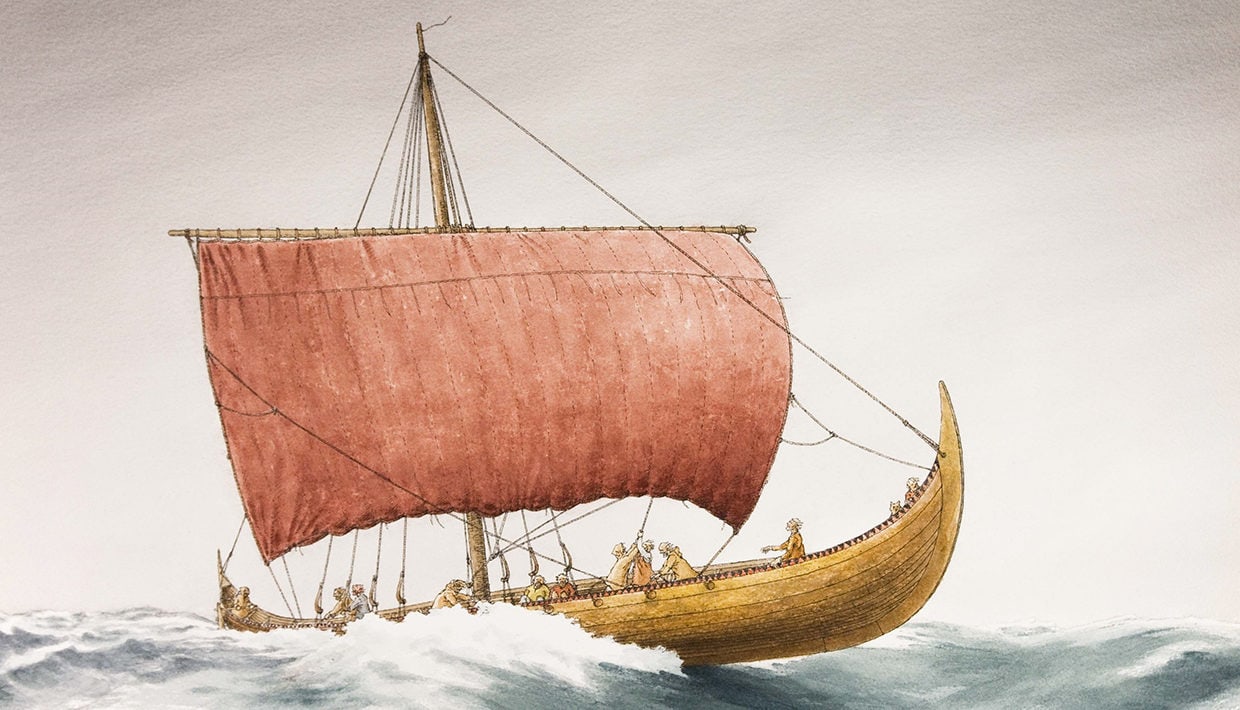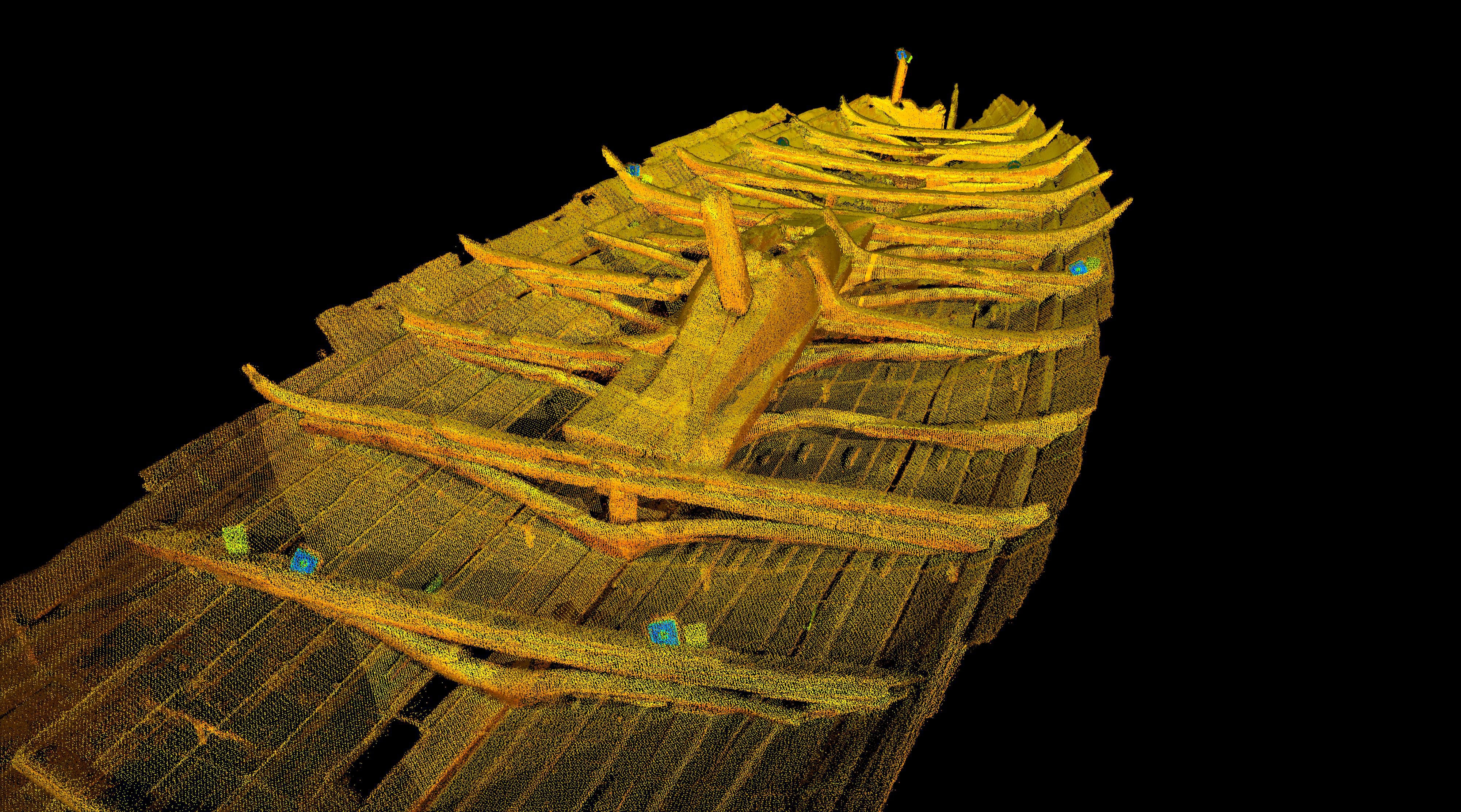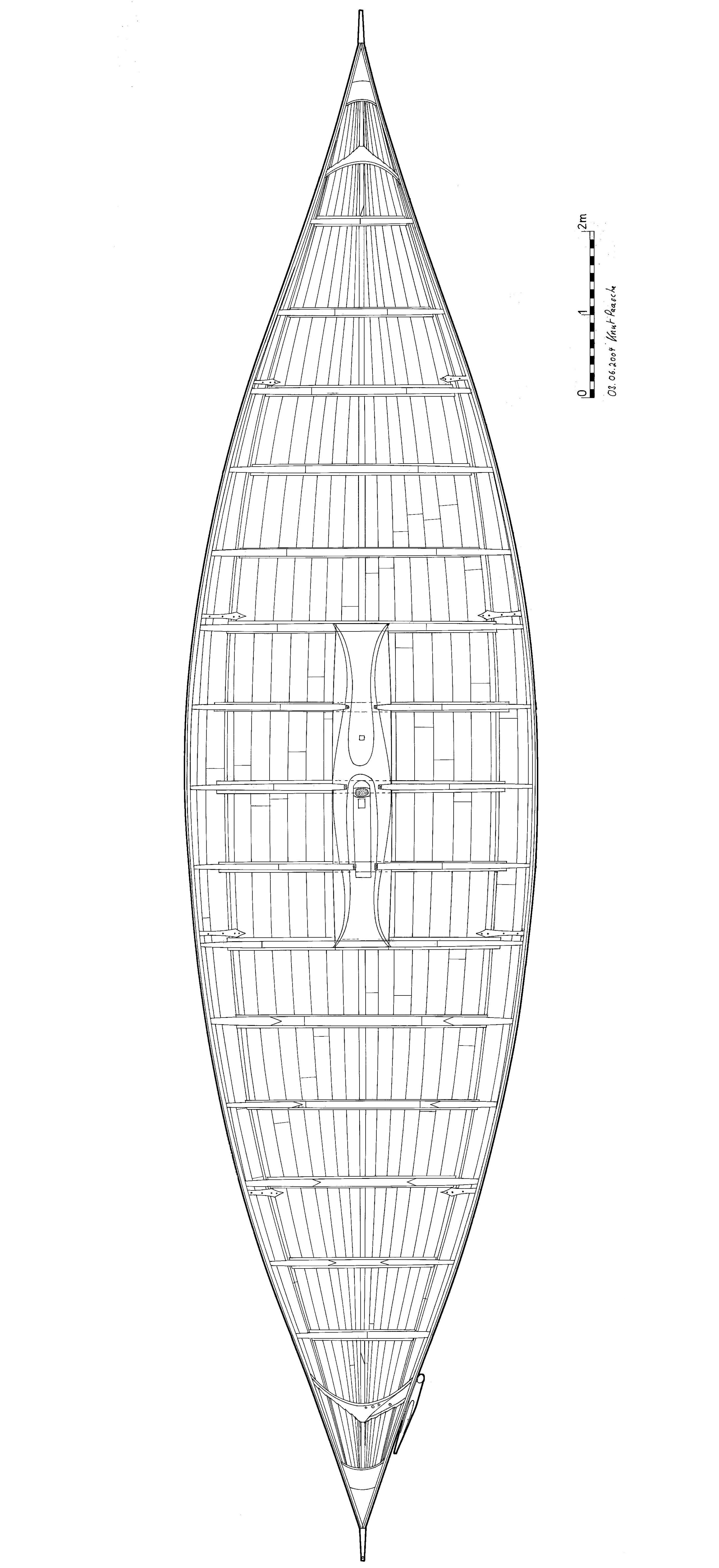
A new article brings the Tune Ship to the world
The Tune ship was found in 1867, but what it looked like and how it was used for has long been a mystery. 150 years after the discovery of the ship, archaeologist and researcher Knut Paasche has created a digital reconstruction of the ship that has revealed many of its mysteries.
-There are only three Viking ships in Norway that are well-preserved from burial finds: The Gokstad, Oseberg and Tune ships. Therefore, this ship is a unique source for understanding Norse society, says archaeologist and researcher Knut Paasche.
Paasche leads NIKU’s department for digital archaeology, and in 2010 delivered Norway’s first doctoral dissertation on Viking ships. While researching the Tune Ship he used new digital methods for documenting and reconstructing the ship.
Recently he published an article about the ship itself and the reconstruction methods for an international audience: «The Tune Ship Reconsidered» in the journal The International Journal of Nautical Archeology.


The Tune Ship was in bad condition
The Tune Ship was discovered on the Haugen farm near Sarpsborg in 1867. It was in one of the largest burial mounds in Scandinavia, reaching 4 meters high, with a diameter of 80 meters.
Parts of the grave goods were decorated with animal ornaments, and ship grave itself contained textiles, weapons, the skeletons of three horses, and the remains of one person. There was no doubt that the person who was buried held high status. But one of the big questions has been the construction of the ship and how it was used.
– Compared to the Oseberg and Gokstad ships, the Tune Ship was badly preserved, and several parts of the ship had deteriorated when it was discovered. Additionally, the documentation that was done during the excavation in the 1860 was minimal, resulting in the appearance of the ship being a mystery for a very long time.
In the new journal article Paasche refers to the part of his dissertation that concerns the ship itself. Could the Tune Ship be reconstructed; was it a seafaring vessel on par with the Gokstad and Oseberg ships, and if this was the case – what did it look like?
Digital methods combined with craft knowledge
Paasche’s digital reconstruction of the Tune Ship was the first use of laser scanning in order to document a cultural heritage artifact in Norway, and it was the first time this was done in ship archaeology. In the following years the method has become a natural part of NIKU’s toolbox when working with cultural heritage documentation.
For Paasche it was also important to regard the digital documentation in regards to other Viking ship discoveries, and not least the traditional knowledge of boat building.
-Laser scanning was used in order to create new documentation of the ship, and I worked out new drawings. You can follow Norwegian wooden boat building techniques from today’s traditional builders and more than a thousand years back in time. It is precisely this combination of archaeological interpretive work, old knowledge through the traditions and recent documentation methods that made it possible to solve the mystery of the Tune Ship.


Thousands of ships but very few sources
After reconstruction of the Tune Ship, one conclusion is that it differs from the Gokstad and Oseberg ships in many ways. All of the ships are clinker-built, but the Tune Ship stands out by having a different length-to-width ratio, and is somewhat flatter on the underside than the other ships.
– The Tune Ship must have been a fast sailboat that also worked well as an oared vessel. Perhaps we can call it a quick-paced courier ship, built mainly not to last, but to move many men quickly over short or longer distances, Paasche says.
Likely, several thousands of ships sailed along the Norwegian coast during the Viking Ages. This is why the Tune, Gokstad and Oseberg ships, along with more recent ship discoveries such as the Gjellestad and Edøy ships, are unique sources for Norwegian boat traditions, the Viking Ages and coastal history in general.
– Studies made of these and other ship discoveries are particularly important if we are to approach the understanding of trade, violence and expansion over great distances in the Viking Ages, Paasche finishes.

